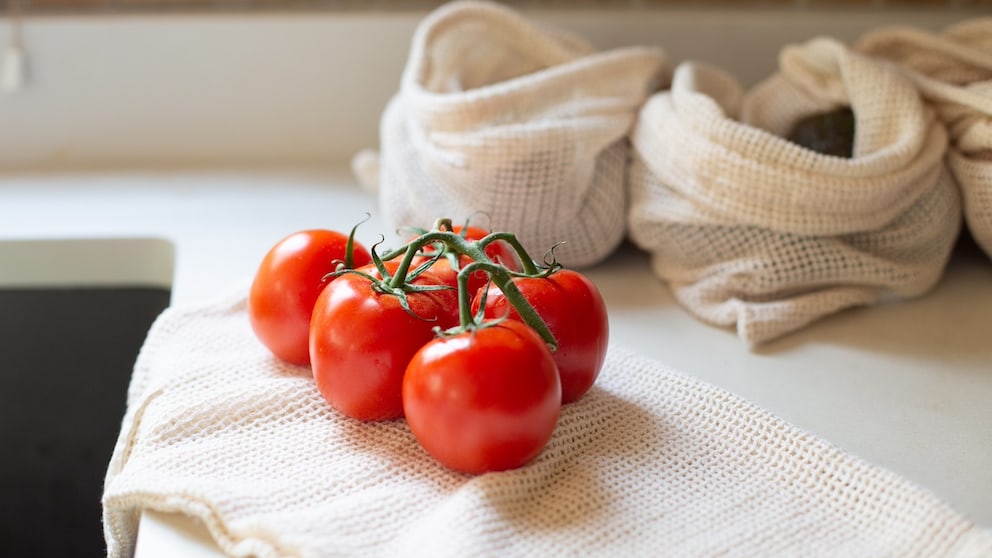March 18, 2025, 2:03 pm | Read time: 2 minutes
Tomatoes are extremely healthy as they are low in calories and contain many nutrients. In order for the red fruits to taste good, it is important to store them in a suitable place. Unfortunately, many people do it wrong and place tomatoes exactly where they lose their flavor.
Tomatoes are one of the more sensitive vegetables when it comes to proper storage. Their taste, consistency, and shelf life depend largely on how they are stored. If stored incorrectly, tomatoes can quickly become mealy.
Where You Should Not Be Storing Tomatoes
You can extend the shelf life of many foods in the fridge. However, tomatoes should not be stored here. According to the Federal Center for Nutrition (bzfe), tomatoes are sensitive to cold. The cold has a negative effect on the texture and taste of the red fruit.
Tomatoes lose their natural sweetness and aroma as temperatures below 10 degrees Celsius stop the ripening process. This also inhibits the development of flavor. In addition, the flesh of the tomatoes may become mealy.

Store Correctly These Fruits and Vegetables Should Not Be Placed in the Vegetable Drawer

Healthy Fruit Store Kiwis Correctly to Keep Them Edible for Longer

Longer Shelf Life Refrigerator or Not? The Best Place for Cucumbers
Better …
To ensure that tomatoes retain their aroma and stay fresh and tasty, they should be removed from any packaging after purchase. Plastic packaging, in particular, is not ideal for storing tomatoes for long periods. The ideal storage location for tomatoes is shady and well-ventilated. According to the Federal Center for Nutrition, room temperatures should be between 12 and 16 degrees Celsius. On the other hand, vine tomatoes feel most comfortable at 15 to 18 degrees Celsius.
A dark pantry or cellar is, therefore, ideal. Tomatoes with green spots can be placed in the sun to ripen. This is because they are climacteric fruit vegetables. Tomatoes that have already been harvested also produce the ripening gas ethylene. Tomatoes produce ethylene in warm and sunny places. Production stops in places that are too cool, such as the fridge.

